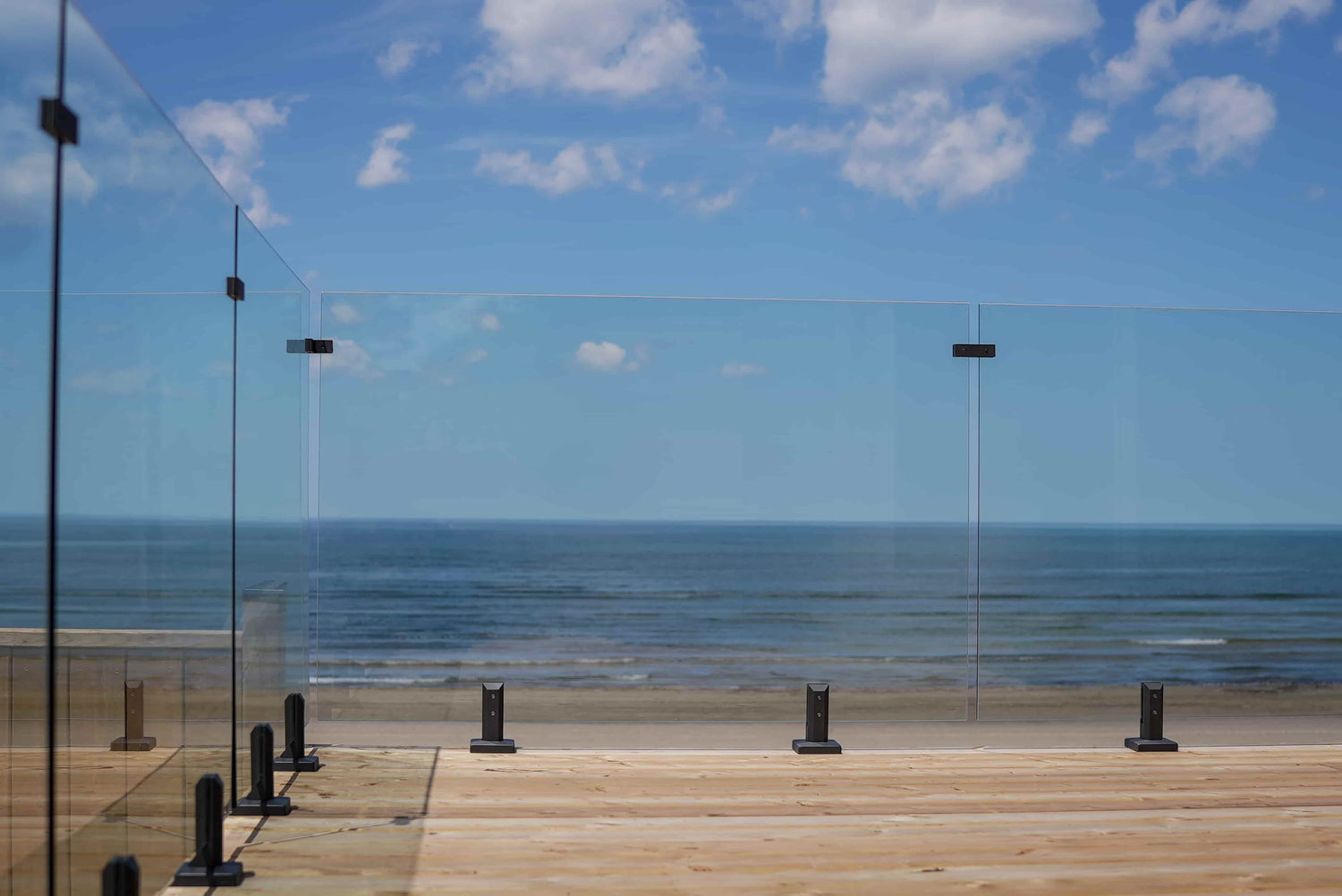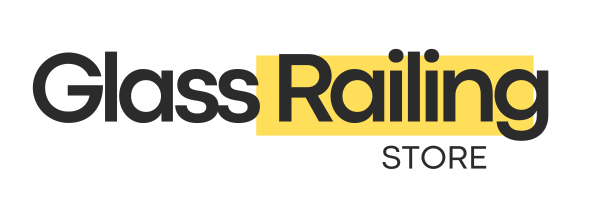British Columbia Building Code for Glass Railings

The British Columbia building code for glass railings is a document that governs glass railing use within this province. It dictates the design and installation of guardrails in different building types.
It provides glass panels and railing height specifications that ensure building safety when people use decks, balconies, stairways, and pools. As such, an agency within the government periodically reviews and updates guidelines safeguarding lives and properties.
For this reason, this article aims to present a detailed description of the British Columbia Building Code and its influence on glass railing use. Keep reading to learn more!
Overview of the British Columbia Building Code
The British Columbia Building Code (BCBC) guides construction in this province. This guideline for British Columbia was formally established in 1973 as an offshoot of the National Building Code of Canada (NBC).
The code standardization within this province allowed for consistent standards across Canada while giving room for provincial amendments. Since the inception of the BCBC, it has undergone periodic reviews, accommodating advancements in technology and safety regulations.
The latest version of this guideline is the British Columbia Building Code 2024 edition, containing multiple impactful updates that include cover code regulation, compliance verification, and design flexibilities as contained in the 2020 NBC. The BCBC is regulated by the Building and Safety Standards Branch and reflects the unique characteristics of British Columbia like climate, policy priorities, and geography.
Some of the regulations reviewed in the BCBC 2024 include:
- Radon mitigation requirements;
- Earthquake and seismic design;
- Cooling requirements;
- Adaptability and accessibility requirements.
Since March 8, 2024, new buildings must comply with the guidelines. However, Earthquake and seismic design have been deferred to March 10, 2025.
In addition, the review of the BCBC makes glass railing design and installation safer for homeowners and businesses.
Glass Railings Compliance Guidelines
Compliance guidelines require the installation of guardrails in different parts of buildings, which include decks, balconies, mezzanines, stairways, and other elevated platforms. These building safety rules help make these spaces safer for all users by preventing accidental falls from elevated surfaces.
To ensure compliance, buildings must adhere to the following glass railing guidelines as stated by the British Columbia Building Code.
- Any platform with a drop of 610 mm (24 inches) or higher requires guard railings on the sides without wall protection.
- Guardrails are necessary for ramps used in the interior and exterior of single-dwelling houses. It is also mandatory to install guards for stairways with 3 and 4 risers in interior and exterior stairs, respectively.
- Ramps that rise over 400 mm (16 inches) require railings.
- Unless for industrial occupancies, guardrails for platforms above 4200 mm (13 ft 9 inches) from the base level must not have openings or attachments between 140 mm (6 inches) and 900 mm (35 inches) above the protected rail guards to prevent climbing.
- Guard rails are not necessary in garage pits, loading docks, and accesses used for maintenance.
Requirements for Glass Railing Systems
The British Columbia Building Code provides detailed requirements for glass railings for decks, balconies, pool fences, and more. Understanding these guidelines is crucial for user safety and regulatory compliance requirements.
The primary elements considered for glass deck railings design and installation include glass panel and height specifications.
Glass Panel Requirements
The BCBC specifies detailed information about glass quality, thickness, color, and composition.
- Panels used in glass deck railings must not have any chips or cracks.
- Glass in guards can be laminated or tempered safety glass according to CAN/CGSB-12.1-M90.
- Glass in guards can also be wired safety glass conforming to CAN/CGSB-12.11-M.
- All glass panel railings must be at least 12 mm (0.5 inches) thick for laminated or tempered safety glass.
- To prevent children from sticking their heads, there must not be an opening between panels larger than 100 mm (4 inches) in diameter.
Glass Railing Height Specifications
The British Columbia Building Code has strict guidelines for glass railing height specifications. These requirements are put in place to ensure users do not accidentally trip and fall over when using balconies, staircases, ramps, and other elevated spaces.
Some critical height regulations for glass guardrails include the following.
- Platforms elevated between 610 mm (24 inches) and 1800 mm (5 ft 10 inches) above the ground require glass railings of 914 mm (36 inches). Likewise, stairway guard railings must be the same height or more.
- Platforms elevated 1800 mm (5 ft 10 inches) above the ground require glass guardrails of 1067 mm (42 inches).
Pool Fence Requirements
To ensure the safety of users, the British Columbia Building Code also has a provision for pool fence requirements. These specifications are crucial for ensuring the safety of users especially children who are at higher risk of drowning.
Although this code does not mandate the installation of enclosures for all pools, it requires the use of measures that prevent access by unauthorized individuals. Therefore, below are pool compliance rules for glass railings.
- All pool fences must be at least 1500 mm (59 inches) high to limit unauthorized access. However, some municipals and cities like Abbotsford, BC, require enclosures to be 1200 mm (47 inches) high around a pool.
- There should be no openings or gaps in the enclosure that allow kids to climb or pass through.
- Glass panels should be at least 12 mm (0.5) thick or more.
- The enclosure should not have any projections or indents that allow for climbing.
- The opening underneath railings should not be up to 100 mm (4 inches) in size to prevent small children from passing into the pool area.
- The top of the pool enclosure should be 1500 mm (59 inches) away from any object, equipment, or wall that can enable climbing.
- Pools fences should have self-latching and self-closing mechanisms inside the enclosure.
Although homeowners may get away with building pools without permits or adherence to glass deck railing regulations, accidents will likely lead to financial and legal consequences.
Safety and Installation Compliance Strategies
Strict adherence to compliance guidelines ensures safety and simplifies glass deck railing installations. As such, the following strategies should help homeowners implement the British Columbia Building Code for glass railings.
- Installers must only use certified laminated or tempered and wired safety glasses when installing glass deck railings.
- Building managers should regularly check railings for defects.
- Pool fences and other enclosures should have appropriate gate latches to prevent unauthorized access.
- To ensure full compliance with all regulations, installers must consider the BCBC and specific municipal codes before designing and installing glass deck railings.
Conclusion
British Columbia Building Code ensures strict adherence to compliance guidelines for glass railing conception and deployment. It remains a relevant and up-to-date regulation based on the National Building Code of Canada due to regular review by the Building and Safety Standards Branch, an agency within the Ministry of Housing in British Columbia.
Since its inception, this code has continued to guide the installation of glass railings within public and private spaces. It also specifies a framework for ensuring building safety without affecting aesthetics.
The BCBC offers specific rules for selecting glass panels and railing height requirements for stairways, decks, balconies, and pool fences. As a result, strictly following this code should guarantee building safety compliance within British Columbia.
British Columbia Building Code FAQs
What is the railing code for British Columbia (BC)?
The railing code for British Columbia specifies the use of laminated or tempered safety glass and wired safety glass with a minimum thickness of 12 mm (0.5 inches). In addition, guardrails must be either 914 mm (36 inches) or 1067 mm (42 inches) depending on the platform’s height from the ground.
Do glass railings need a top rail?
Glass railings should not be installed without top rails. However, frameless glass railings can be installed with top rails when appropriate design and installation steps are taken.
What is the minimum allowable opening on a glass railing?
Glass railing systems should not allow openings more than 100 mm (4 inches) in diameter to prevent kids from passing through.
Let customers speak for us

Glass Railing Near You
Discover how The Glass Railing Store has been delivering exceptional service to our customers, thanks to our dedicated and knowledgeable team and their love our glass railing products.







